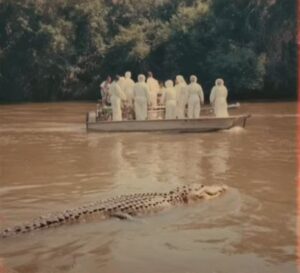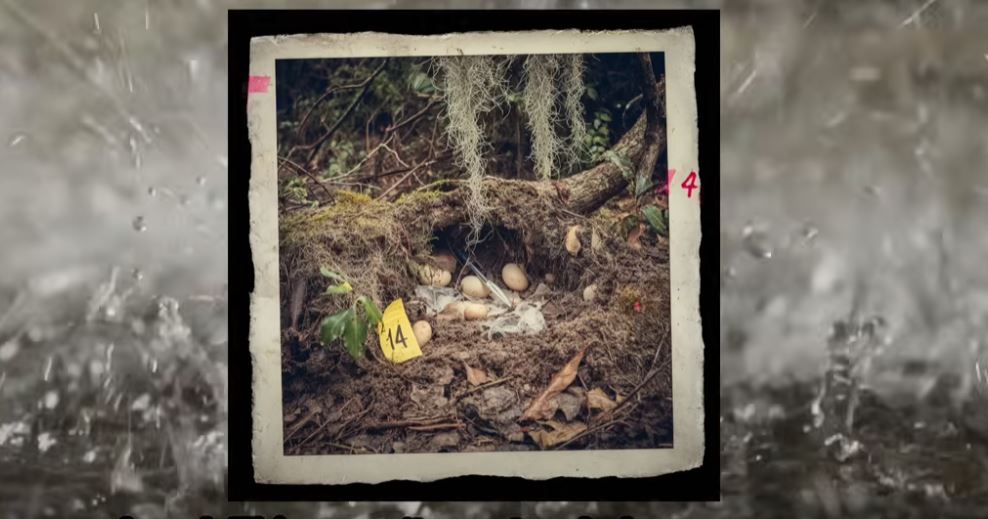In the spring of 1986, Julian Baptiste was the pride of his family and a rising star in his small Louisiana town. At just 17, he’d earned a full scholarship to LSU for environmental science—a rare achievement for a Black teen in rural America, and a testament to his brilliance and determination. But one humid afternoon, while conducting research in the mysterious swamps he loved, Julian vanished. For nearly four decades, the official story was simple, tragic, and, as it turns out, deeply false: Julian was taken by an alligator. His torn school jacket, found near a nest, seemed to confirm it. The case was closed. But the truth, as revealed 37 years later, would shake the community to its core.

Julian’s disappearance was never just a tragedy for his family. It was a wound that never healed, especially for his older sister Simone. She remembered him not as a reckless explorer, but as a careful, passionate scientist. On the day he vanished, Julian was in the midst of a project for the state science fair—a water study of the basin’s hidden coves. He was methodical, taking samples from a remote stretch known as Dead Man’s Sloo. There, he found something alarming: oily sheens on the water, chalky stains on the cypress knees, and a bitterness in the air that set his scientific instincts on edge. His tests revealed lethal concentrations of industrial toxins—dioxin, mercury, lead—far beyond legal limits. The pollution was so severe, Julian realized, that it could only have come from one place: Thorn Chemical, a sprawling plant up the river owned by the powerful Marcus Thorne.
Julian’s excitement quickly turned to dread. This was no longer just a school project; it was evidence of a crime. Determined to do the right thing, Julian gathered his data, put on his best shirt, and drove to Thorn Chemical to confront Thorne himself. The meeting was tense. Thorne, a man used to getting his way, listened to Julian’s findings with a cold, calculating gaze. The young scientist was earnest, hopeful that the truth would force change. But Thorne saw only a threat. Within minutes, Julian’s fate was sealed.
Days later, Julian’s boat was found drifting. His sampling kit and notebook were missing. The sheriff, a close friend of Thorne’s, showed little interest in the investigation. When Julian’s jacket turned up near an alligator nest, the sheriff declared the case closed—a tragic accident, a promising life lost to the swamp. For the town, the story was accepted and soon forgotten. For Simone, it was a lie she could never accept.
As the years passed, Simone’s grief hardened into resolve. She became a journalist, her office filled with maps, files, and a single framed photo of her brother. Every story she chased about pollution or corporate wrongdoing was, at its heart, a way to honor Julian. Meanwhile, Marcus Thorne’s reputation grew. He became a philanthropist, his name etched on hospitals and community centers, his image untarnished. But beneath the surface, the truth festered.

The man who’d helped Thorne cover up Julian’s death, Clay Dubois, did not fare so well. Haunted by guilt, Clay became the town drunk, his life spiraling into regret and isolation. In his nightmares, he relived the moment he’d been ordered to silence Julian, the sound of the gunshot, and the horror of sinking the boy’s body in a concrete block meant for a discharge pipe. The jacket, planted as evidence, was the final touch in a cynical story that protected Thorne for decades.
Then, in 2023, everything changed. As part of a federal cleanup, EPA scientists arrived in the basin, targeting the same cove where Julian had taken his last samples. Their findings were shocking: the water was a toxic tomb, poisoned by the same chemical cocktail Julian had identified. The data matched Thorn Chemical’s processes exactly. The report triggered a criminal investigation, and Detective Lena Rouso of the Louisiana Bureau of Investigation began to connect the dots. She discovered Julian’s cold case, the suspicious circumstances, and Simone’s long-held suspicions.
Rouso reached out to Simone, and together they began to unravel the decades-old conspiracy. They poured over maps, reports, and witness accounts. The key was Clay Dubois, whose guilt finally broke under questioning. In a bar, surrounded by the ghosts of his past, Clay confessed: Thorne had ordered him to lure Julian to the swamp, kill him, and hide the body in a wet concrete block used for the illegal discharge pipe. The jacket was planted to sell the alligator story. Clay provided the exact location of the pipe—a secret he’d carried for 37 years.
The recovery operation was grim. Using sonar and Clay’s directions, investigators located the block deep in the mud. A crane lifted it from the water, revealing a human-shaped cavity inside. The remains of Julian Baptiste, preserved in a waxy “grave wax,” were found curled in his final resting place—a chilling testament to the crime.

With the evidence in hand, Marcus Thorne was arrested. His empire crumbled, his legacy destroyed by the truth he’d tried so hard to bury. For Simone, justice was bittersweet. She stood at the water’s edge, watching as her brother’s story finally came to light. The tragedy was undeniable—a brilliant mind silenced, a family shattered, and a community forced to confront the cost of its silence.
The revelation of Julian Baptiste’s fate is a reminder of the power of truth, the persistence of those who refuse to forget, and the importance of justice—even when it comes decades too late. For the Baptiste family, and for the town, the swamp will never be just water and mud again. It is a place where secrets sink deep—but sometimes, they rise.
If this story moved you, share it and let others know that even the deepest truths can surface. For more stories that matter, follow, comment, and keep asking questions—because justice, no matter how long it takes, is always worth the fight.

